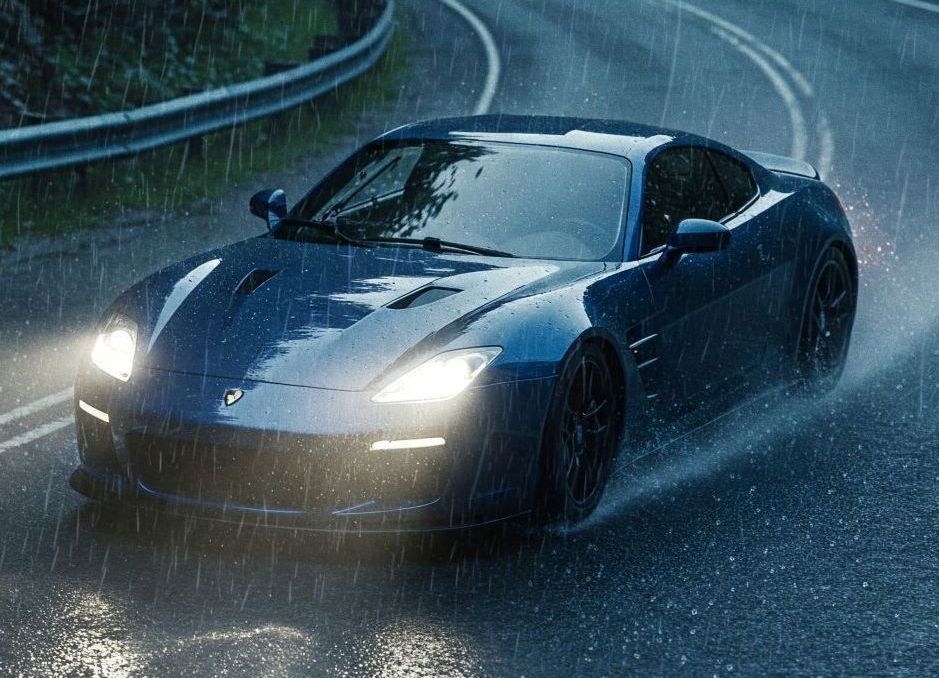Blog Layout
Beyond Passwords: Next-Level Cybersecurity with Select Source Insurance Group
Doug Stockman • April 9, 2024
With World Password Day right around the corner on May 2nd, it's a timely reminder that our digital lives are constantly under threat from cybercriminals. At Select Source Insurance Group, we believe that every day should be an opportunity to bolster your digital defenses, not just when the calendar prompts us. In this spirit, we're here to share some pivotal strategies and insights that go beyond the annual reminder to change your passwords. From embracing robust passphrase techniques to understanding the critical importance of regular software updates and the power of multi-factor authentication (MFA), our guide aims to fortify your online presence against the ever-evolving landscape of cyber threats.
Embrace the Power of Passphrases
Gone are the days of relying solely on complex, hard-to-remember passwords. Instead, we encourage you to leverage passphrases. What's a passphrase, you ask? It's a sequence of words or other text that is not only easier to remember but can also be much longer than the traditional password. This doesn't mean picking something predictable like "I love pizza," but something unique and meaningful to you that others couldn't easily guess.
But here’s a pro tip: don't get too comfortable. Implement a regular schedule for changing these passphrases, especially for accounts that hold sensitive information. It's like changing the locks on your doors periodically; you never know who might have found a spare key.
Double Down with Multi-Factor Authentication (MFA)
In an age where a password alone doesn't cut it, Multi-Factor Authentication (MFA) adds an essential layer of security. MFA requires not just something you know (like a passphrase) but also something you have (such as a code sent to your phone) or something you are (like a fingerprint scan).
However, not all MFA methods are created equal. While receiving a code via SMS is common, it's not the most secure method. Instead, consider using an authenticator app. These apps generate codes that are not only tougher for cybercriminals to intercept but also change every 30 seconds, making unauthorized access even harder.
Stay Updated to Stay Protected
Keeping your software up-to-date is like getting vaccinated to protect against the latest viruses – but in this case, it's your digital devices that need the protection. Cybercriminals love exploiting vulnerabilities in outdated software, so it’s crucial to keep your operating systems and applications current.
Enabling automatic updates can take the hassle out of remembering to check for new versions, ensuring your defenses are always as strong as possible.
Phishing: Don't Take the Bait
Last but certainly not least, be wary of phishing attempts. These are unsolicited emails or messages that may look legitimate but are designed to steal your personal information or infect your devices with malware. The rule of thumb here is simple: if you didn't expect it, inspect it. Be cautious about clicking on links or downloading attachments from unknown or suspicious sources.
As we celebrate World Password Day, let's commit to not only strengthening our own digital security but also encouraging those around us to do the same. At Select Source Insurance Group, we believe in empowering our clients and community with the knowledge to protect what matters most. Remember, in the digital world, your security is only as strong as your weakest link. Let's make sure that link is fortified.

By Doug Stockman
•
February 10, 2025
Top 10 Insurance Myths Busted (by Yours Truly, Your Local Insurance Agent) Hey folks! Ready to debunk some myths that are floating around out there like rogue shopping carts in a hurricane. I hear it all the time – whispers in the grocery store, hushed tones at the PTA meeting. "Did you know…?" Nine times out of ten, "Did you know…?" is followed by something wildly inaccurate about insurance. So, let's grab our myth-busting ray guns and get to work! 1. Red Cars = Higher Insurance Rates: Seriously? Do you think insurance companies employ colorblind squirrels to set rates? The color of your car has absolutely nothing to do with your premiums. It's all about your driving record, the type of car (sports car vs. sensible sedan), and where you live. So, go ahead, rock that cherry red convertible. Just drive safely, okay? 2. "Full Coverage" Means I'm Covered for EVERYTHING: Ah, "full coverage." It's a catchy phrase, isn't it? But it's also a bit of a misnomer. "Full coverage" usually refers to a combination of liability, collision, and comprehensive coverage. It doesn't mean you're covered if your pet hamster spontaneously combusts in your car (yes, I've heard it all). Read your policy, people! Know what you're actually paying for. 3. My Home Insurance Covers EVERYTHING in My Home: See Myth #2 but replace "car" with "home." Your standard homeowner's policy is great for things like fire, theft, and some weather-related damage. But it probably won't cover your prized collection of antique thimbles if they're damaged by a rogue poltergeist. (Again, I've heard it all.) There are specific riders and endorsements for certain valuables, so chat with your agent. 4. Filing a Claim Will Automatically Jack Up My Rates: Not necessarily. One small claim might not affect your rates too much. It's the frequency of claims that raises red flags. Think of it like this: one fender bender is a "whoops," three fender benders are a "pattern." Insurance companies don't like patterns. 5. Renters Don't Need Insurance: Oh, renters, renters, renters. This one makes me cringe. Just because you don't own the building doesn't mean you don't own stuff. Your landlord's insurance covers the structure, but it doesn't cover your personal belongings. A good renter's policy is surprisingly affordable and can save you from financial ruin if your apartment catches fire, gets burgled, or, you know, invaded by those thimble-loving poltergeists. 6. Older Homes Are Always More Expensive to Insure: Not always! Sure, some older homes might have outdated wiring or plumbing, but many have been renovated and are perfectly safe. Insurance companies look at the condition of the home, not just its age. 7. I Don't Need Flood Insurance - I Don't Live Near Water: Newsflash: floods can happen anywhere. Even if you live miles from the coast, heavy rain can cause flash flooding. Standard homeowner's insurance doesn't cover flood damage. You'll need a separate flood insurance policy. 8. My Credit Score Doesn't Affect My Insurance Rates: Wrong! In most states, insurance companies use credit-based insurance scores to help predict the likelihood of you filing a claim. So, keep those credit scores high, folks! 9. If I Total My Car, I'll Get What I Paid For It: Nope. You'll get the current market value of your car, which might be less than what you paid for it, especially if it's been owned a few years. Also, if your loan amount is more than the value of your car this is where "gap insurance" comes in. It covers the difference between what you owe on your loan and what the insurance company pays out. 10. Insurance Agents Are All Sleazy and Just Want Your Money: Okay, okay, some of us might be a little… enthusiastic. But most of us genuinely care about protecting our clients. We want you to have the right coverage at the right price. So, don't be afraid to ask questions. That's what we're here for! So, there you have it – ten insurance myths, thoroughly busted. Now go forth and be informed! And as always, if you have any questions, give your friendly neighborhood insurance agent a call. (That's me!)

By Doug Stockman
•
February 6, 2025
10 Safety Tips for Driving in the Rain (Because Hydroplaning is So Last Season) Alright, listen up, lead foots and Sunday drivers alike. It's raining. Again. And unless you've recently sprouted gills or your car is amphibious (in which case, please send pics), you're gonna have to navigate this liquid apocalypse like the rest of us mere mortals. So, ditch the daydreaming about that tropical vacation and pay attention, because hydroplaning isn't a personality trait, and ending up in a ditch is a terrible way to spend a Tuesday. Remember, safe driving keeps you from injury and doesn't give your insurance rates another reason to go up. 1. Slow Your Roll (Like, Seriously, Chill): This isn't a Fast & Furious movie, Vin Diesel isn't waiting for you at the finish line, and your pizza will still be lukewarm even if you arrive five minutes later (tip: even warmer if you turned on your heated seats). The faster you go, the more likely you are to become intimately acquainted with a guardrail. Think of it this way: slow and steady wins the race... and avoids the tow truck. 2. Lights On (Even if it's Not "Dark"): Yes, Captain Obvious, it's the law. But beyond that, it makes you less likely to be mistaken for a rogue wave by other drivers. Plus, it gives you that cool, mysterious vibe. You know, the kind that says, "I'm a responsible adult who also happens to be an awe-inspiring driver." 3. Check Your Tires (Are They Bald? You're Gonna Have a Bad Time): Think of your tires as the shoes of your car. Would you wear flip-flops to climb Mount Everest? No. (Unless you're insane. And also, please send pics.) Check your tread depth. If your tires are balder than a cue ball, you're basically driving on ice, even if it's 70 degrees out. 4. Double the Following Distance (Seriously, Double It): Tailgating is a bad idea on a sunny day. In the rain? It's a recipe for disaster. Give the car in front of you enough space so you have time to react if they suddenly decide to audition for "America's Next Top Emergency Brake." 5. Avoid Cruise Control (Unless You Want to Lose Control): Cruise control is great for long, straight highways. Rainy, slippery roads? Not so much. You want to be in full control of your vehicle, not letting some robot make decisions for you when things get dicey. 6. Brake Gently (Don't Slam On the Brakes Like You're Trying to Stop a Runaway Train): Slamming on the brakes in the rain is a surefire way to initiate a spin cycle that would make your washing machine jealous. Apply the brakes smoothly and gradually. Think of it as a delicate dance with your car, not a wrestling match. 7. Steer Smoothly (No Jerking Allowed): Just like braking, steering should be a gentle art. Jerky movements are more likely to cause your car to lose traction and send you sliding sideways. Imagine you're carrying a tray of hot coffee. Smooth and steady wins the day (and prevents third-degree burns). 8. Be Wary of Puddles (They Could Be Deeper Than You Think): Puddles can hide all sorts of dangers: potholes and debris. Avoid them if you can. If you can't, drive through them slowly and steadily. And for the love of all that is holy, don't try to splash pedestrians. Karma is a real thing. 9. Visibility is Key (Wipers On, Fog Lights If Needed): Make sure your wipers are in good working order. If they're streaking or squeaking, replace them. They're cheap, and they make a world of difference. Most auto parts stores will install them free of charge if purchased in their store. And if visibility is really bad, use your fog lights (but remember to turn them off when the fog clears, or you'll blind oncoming drivers). 10. Stay Calm (Panic is Your Enemy): If you do start to hydroplane, don't panic. Take your foot off the gas, steer gently in the direction you want to go, and avoid slamming on the brakes. Remember, smooth and steady. Think of it as a test of your driving skills. You got this. (Probably.) So, there you have it. Ten tips to help you survive the next downpour. Now go forth and conquer the roads, my friends. And try not to wreck.

By Doug Stockman
•
February 5, 2025
Gap Insurance: Because Life Gives You Lemons (and Your Car Gets Totaled) Life throws curveballs. Sometimes those curveballs involve deer, rogue shopping carts, and the dreaded "your vehicle is totaled" verdict from your insurance company. And while your insurance might cover the cost of your car... well, let's just say it might not be enough to cover your loan debt (or that Hawaiian vacation you were planning). Enter: Gap Insurance, the mysterious force field that promises to save you from financial ruin (or at least a serious case of ramen noodles). Think of it this way: You buy a brand-new car. You're cruising down the highway, top down, singing along to your favorite tunes. Life is good. Then BAM! Disaster strikes. Your car is totaled. Your insurance company cuts you a check... but it's not enough to cover the car loan. You're still on the hook for a hefty chunk of change, leaving you feeling more "gaping hole in my wallet" than "gap year in Europe." Gap Insurance is basically your financial superhero. It swoops in, cape flowing, to cover the difference between what your insurance pays out and what you still owe on your loan. It's like having a secret weapon against the cruelties of car ownership. But is it worth the extra cash? That, my friend, is the million-dollar question. Pros: Peace of Mind (Kinda): Knowing you're covered if disaster strikes can offer a fleeting sense of tranquility. Avoid Ramen Noodle Ramen: Let's be honest, nobody wants to live on ramen noodles for the next five years. Flex on Your Friends: "Oh, my car got totaled? No biggie, I have Gap Insurance." (Okay, maybe don't actually flex on your friends.) Cons: It Costs Money: And let's be real, money doesn't grow on trees (unless you live in a magical forest, in which case, please share your location). Might Be a Waste of Cash: If you make a significant down payment and have a shorter loan term, you might be perfectly fine without it. Fine Print Nightmare: Deciphering the fine print can feel like trying to solve a Rubik's Cube while blindfolded. The Verdict? Ultimately, the decision to get Gap Insurance is a personal one. If the thought of being "underwater" on your car loan gives you night terrors, then it might be worth the extra cost. Many insurance companies offer Gap Insurance for a fraction of the cost at the dealership or bank. And remember, even with Gap Insurance, always drive defensively. Because let's face it, life is unpredictable, and sometimes, the only way to survive is with a healthy dose of sarcasm and a really good insurance plan. Disclaimer: This blog post is for entertainment purposes only and should not be considered financial advice. Consult with a qualified financial advisor for personalized guidance. P.S. If your car does get totaled, take solace in the fact that you now have an excellent excuse to buy that electric scooter you've always wanted.
© 2025
All Rights Reserved | Privacy Policy | Terms of Use
